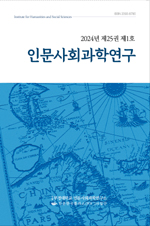- 영문명
- A Practical Study of Chinese “幫+NP+VP” Syntax Using Media Content
- 발행기관
- 부경대학교 인문사회과학연구소
- 저자명
- 김현희(Hyeonhee Kim)
- 간행물 정보
- 『인문사회과학연구』제26권 제3호, 179~200쪽, 전체 22쪽
- 주제분류
- 사회과학 > 사회과학일반
- 파일형태
- 발행일자
- 2025.08.31

국문 초록
중국어 어법체계에서 “幫”(돕다)은 동사로 분류된다. 그러나 실제 사용 양상을 볼 때“幫+NP+VP” 구문으로서 수혜격 목적어를 이끌어내는 전치사적 용법으로서의 용례가 더 많은 비중을 차지한다. 이와 관련하여 “幫”을 “동사 겸 전치사”, “전치사”로 규정하는 논의가 존재한다. 그러나 사전적 정의로 볼 때 “幫”은 여전히 동사로 분류된다.
한편, “幫+NP+VP” 구문은 기본적으로 “~에게 ~를 해 주다”의 의미구조를 지니고 있다. 그러나 한국인 수용자의 관점에서 볼 때 이에 대한 한국어 대응표현은 이에 국한되지 않으며, “幫+NP+VP” 구문의 의미구조가 더 많은 의미 영역에 걸쳐있음을 발견할 수 있다.
이상의 특징을 종합해 보면 “幫” 및 관련 구문은 이론적 규정과 실제 사용에서 괴리를 보이며, 특히 한국 학습자의 관점에서 볼 때 기학습된 인지의 틀과 현실적으로 접하는 실제 용례 사이에서 또 다른 괴리를 자아낸다고 할 수 있다.
이에 본고는 중국어 교재에서 제시되는 “幫”과 관련된 기존의 인지 틀이 실제 상황을 충분히 포괄해 내지 못함을 지적하고, 실제 언어 사용을 반영하는 드라마 콘텐츠의 말뭉치를 분석하여 “幫” 및 관련 구문의 통사적 특징을 검토하였다. 또한 해당 구문의 한국어 번역어 대응 분석을 통해 “幫+NP+VP” 구문의 의미구조를 분석하였다.
우선, 통사적 특징 측면에서 볼 때 “幫”은 단독 NP보다는 NP+VP를 목적어로 취하는 “幫+NP+VP”의 용례가 과반수를 차지한다. 즉 “幫”이 단일 서술어로 기능하지 않는다는 점에서 전치사로서의 통사 환경이 충분히 갖춰졌음을 지적할 수 있다. 또한 후행 VP가 보이는 행위 지향성을 분석한 결과 92%의 용례에서 VP는 주어 NP를 지향하며, 목적어 위치의 NP는 행위자로서의 기능을 상실함을 확인했다. 이를 통해 “幫”이 전치사로 기능함을 밝혔다.
또한 한국어 번역어와의 대응 관계를 분석하여 “~에게 ~을 해 주다(돕다)” 외에 “~위해/대신 하다”, “하다”, “해 두다/놓다”의 의미구조를 지님을 밝혔다. 특히 “하다” 및 “해 두다/놓다”는 시혜성이 퇴색된 상태이며 이를 통해 “幫”이 허화의 과정에 있다는 결과를 도출해 낼 수있다.
영문 초록
In the Chinese grammar system, “幫” (help) is classified as a verb. However, in practical use, it is more often used as a prepositional usage to take a beneficiary object in the phrase “幫+NP+VP”. In this regard, there is a discussion that defines “幫” as “verb-and-preposition” and “preposition”. However, by dictionary definition, “幫” is still classified as a verb.
On the other hand, the phrase “幫+NP+VP” basically has a semantic structure of “to give ~ to ~”. However, from the perspective of Korean translation, it can be found that the meaning structure of the phrase “幫+NP+VP” is not limited to this, and the meaning structure of the phrase “幫+NP+VP” spans more semantic areas.
Summarizing the above characteristics, “幫” and related phrases show a gap between theoretical regulations and practical use, and from the perspective of Korean learners, another gap can be created between the pre-learned cognitive framework and real-world use cases.
In response, this paper pointed out that the existing cognitive framework related to “幫” presented in Chinese textbooks does not sufficiently cover the actual situation, and examined the syntactic characteristics of “幫” and related phrases by analyzing the corpus of drama content that reflects actual language use. In addition, the semantic structure of the phrase “幫+NP+VP” was analyzed through the Korean translation correspondence analysis of the phrase.
First of all, in terms of syntactic characteristics, the majority of “幫” is the use of “幫+NP+VP” that takes NP+VP as the object rather than a single NP. In other words, it can be pointed out that the syntactic environment as a preposition is sufficiently equipped in that “幫” does not function as a single predicate. In addition, as a result of analyzing the behavioral orientation seen by the subsequent VP, it was confirmed that in 92% of the use cases, the VP orients the subject NP, and the object NP loses its function as an actor. Through this, it was revealed that “幫” functions as a preposition.
In addition, by analyzing the correspondence relationship with the Korean translation, it was revealed that the meaning structures of “to do instead”, “do instead”. In particular, “do” is in a state in which the benefit of doing has faded, and through this, “幫” can be derived that “幫” is in the process of grammaticalization.
목차
Ⅰ. 들어가며
Ⅱ. 연구배경 및 선행연구 분석
Ⅲ. “幫+NP+VP” 구문 분석
Ⅳ. 나가며
참고문헌
해당간행물 수록 논문
참고문헌
최근 이용한 논문
교보eBook 첫 방문을 환영 합니다!

신규가입 혜택 지급이 완료 되었습니다.
바로 사용 가능한 교보e캐시 1,000원 (유효기간 7일)
지금 바로 교보eBook의 다양한 콘텐츠를 이용해 보세요!



